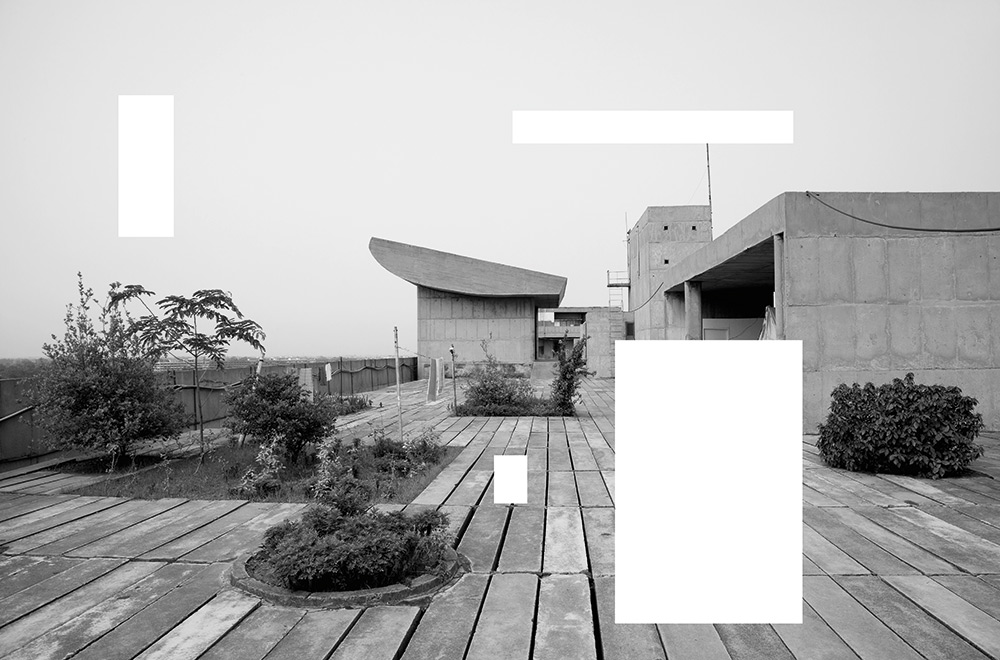

A Different Order (#1, #2)
2016
Archival pigment print on Fine Art Baryt
79 x 120 cm each
![]()
![]()
A DIFFERENT ORDER (#3, #4)
2016
Archival pigment print on Fine Art Baryt
120 x 79 cm each
![]()
![]()
A DIFFERENT ORDER (#5, #6)
2016
Archival pigment print on Fine Art Baryt
79 x 120 cm each
![]()
![]()
A DIFFERENT ORDER (#7, #8)
2016
Archival pigment print on Fine Art Baryt
120 x 79 cm each
![]()
The “lingering echo” of form—and specifically, of Western modernism in India—is the subject of A Different Order (2014/2016), a series of paired pigment prints in which Kay Walkowiak explores Chandigarh, a planned city based on designs by Le Corbusier, in the context of the contrasting Eastern and Western conceptions of form. The explicit objective of Le Corbusier’s utopian urban vision was a progressive transformation of society—a project that is now regarded as a failure. The artist combines pictures of Chandigarh as it appears today with superimposed austere compositions of black and white rectangles to reveal the city’s architecture to be a utopia turned form and highlight the limitations of its ostensible “timelessness.” Once the buildings were realized in India, time, and the residents, adapted them, transforming the rigid logic of “either–or” into a “both–and.”
Text: Marlies Wirth, MAK, Vienna 2016
︎ Archive Photography
2016
Archival pigment print on Fine Art Baryt
79 x 120 cm each


A DIFFERENT ORDER (#3, #4)
2016
Archival pigment print on Fine Art Baryt
120 x 79 cm each


A DIFFERENT ORDER (#5, #6)
2016
Archival pigment print on Fine Art Baryt
79 x 120 cm each


A DIFFERENT ORDER (#7, #8)
2016
Archival pigment print on Fine Art Baryt
120 x 79 cm each

A DIFFERENT ORDER
2016
Exhibition view
MAK - Museum of Applied Arts Vienna
2016
Exhibition view
MAK - Museum of Applied Arts Vienna
The “lingering echo” of form—and specifically, of Western modernism in India—is the subject of A Different Order (2014/2016), a series of paired pigment prints in which Kay Walkowiak explores Chandigarh, a planned city based on designs by Le Corbusier, in the context of the contrasting Eastern and Western conceptions of form. The explicit objective of Le Corbusier’s utopian urban vision was a progressive transformation of society—a project that is now regarded as a failure. The artist combines pictures of Chandigarh as it appears today with superimposed austere compositions of black and white rectangles to reveal the city’s architecture to be a utopia turned form and highlight the limitations of its ostensible “timelessness.” Once the buildings were realized in India, time, and the residents, adapted them, transforming the rigid logic of “either–or” into a “both–and.”
Text: Marlies Wirth, MAK, Vienna 2016
︎ Archive Photography